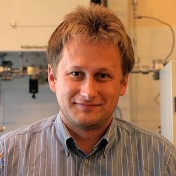Study on Materials for Adsorption of CH4 and CO2
A special issue of Materials (ISSN 1996-1944). This special issue belongs to the section "Advanced Materials Characterization".
Deadline for manuscript submissions: closed (20 April 2022) | Viewed by 7408
Special Issue Editor
Special Issue Information
Dear Colleagues,
Environmental problems related to greenhouse gas emissions encourage scientists to look for materials with interesting CO2 and CH4 sorption properties. There are many engineering, chemical, and agricultural fields for which high quality CO2 and CH4 sorbents are very valuable in application. The expected sorption properties of materials include not only optimization of their sorption capacity, but also the kinetics of the transport processes of molecules in their pore structure. Depending on the potential application, the shape of the sorption isotherms is also important.
Environmental aspects are often related to enhanced coal bed methane recovery. Mining activity leads to the emission of CH4, whose greenhouse potential is much higher than CO2. The capture of CH4 from ventilation shafts remains a very difficult problem. In this case, the problems result from low CH4 concentrations in the mixture with air and very high gas flows. Other engineering problems generate further difficulties which require the use of sorbents with specific properties.
The most common group of advanced sorbents are active carbons. Hard coal is also a natural CO2 and CH4 sorbent, occurring in nature in huge amounts.
High expectations of scientists are focused on advanced carbon nanomaterials. Sorbents from the group of MOF type materials are developing very dynamically.
Measurement methods are also important, describing the pore space of the sorbents, their porosity, specific surface area and other parameters.
All these areas, combining the effects of scientists' work and engineers' expectations, form a group of researchers for whom the Special Issue: "Study on Materials for Adsorption of CH4 and CO2" is dedicated.
Prof. Dr. Norbert Skoczylas
Guest Editor
Manuscript Submission Information
Manuscripts should be submitted online at www.mdpi.com by registering and logging in to this website. Once you are registered, click here to go to the submission form. Manuscripts can be submitted until the deadline. All submissions that pass pre-check are peer-reviewed. Accepted papers will be published continuously in the journal (as soon as accepted) and will be listed together on the special issue website. Research articles, review articles as well as short communications are invited. For planned papers, a title and short abstract (about 100 words) can be sent to the Editorial Office for announcement on this website.
Submitted manuscripts should not have been published previously, nor be under consideration for publication elsewhere (except conference proceedings papers). All manuscripts are thoroughly refereed through a single-blind peer-review process. A guide for authors and other relevant information for submission of manuscripts is available on the Instructions for Authors page. Materials is an international peer-reviewed open access semimonthly journal published by MDPI.
Please visit the Instructions for Authors page before submitting a manuscript. The Article Processing Charge (APC) for publication in this open access journal is 2600 CHF (Swiss Francs). Submitted papers should be well formatted and use good English. Authors may use MDPI's English editing service prior to publication or during author revisions.
Keywords
- adsorption
- methane
- carbon dioxide
- sorbents
- carbon nanomaterials
- coal
- active carbon
- zeolite
- MOF
- greenhouse gases
- Enhanced Coal Bed Methane recovery
- Carbon capture and storage
- pore structure
- specific surface area
- porosity






